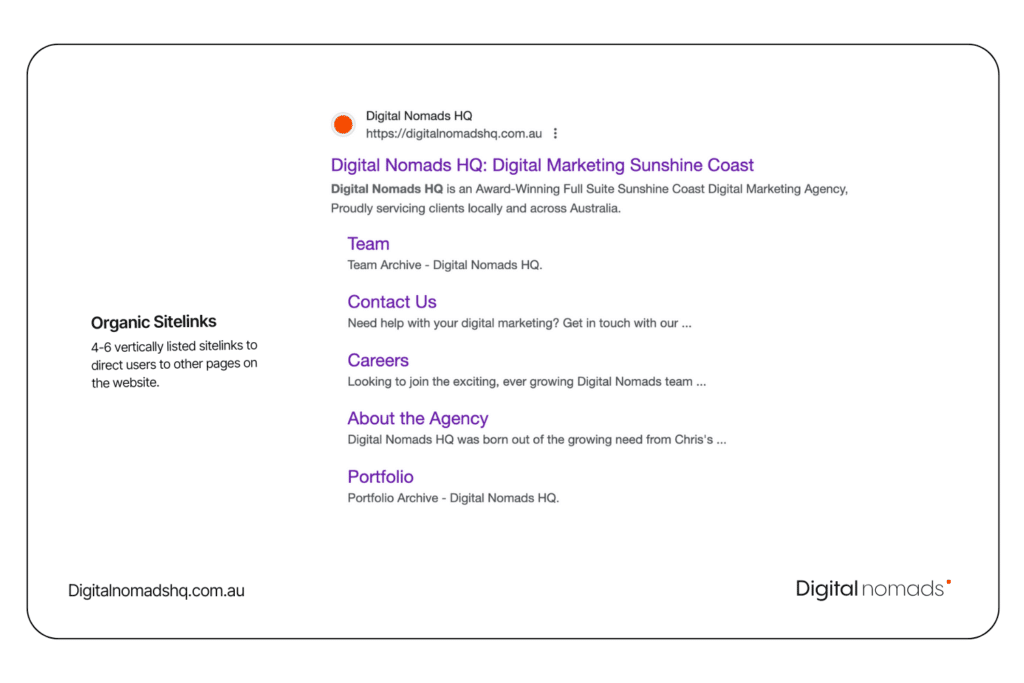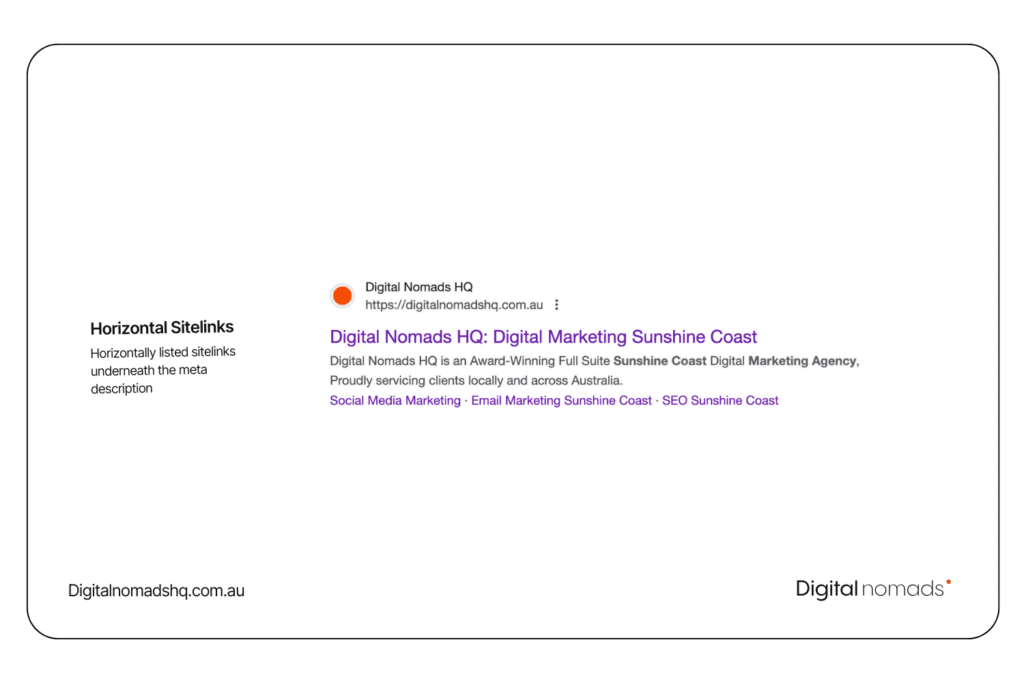What are Sitelinks?
Sitelinks refer to the cluster of links that can be found under some search results. They are the most common SERP feature and often display other important or relevant pages of the ranking website. Google will analyse a website and find shortcuts to key sections or pages that users might find valuable and display them as site links.
However, webmasters can’t directly control which pages appear as sitelinks, they can only optimise their website structure and internal linking strategies to increase the likelihood that Google will select relevant pages for display.
Sitelinks can be displayed in a number of different ways. The three most common are:
Standard Organic Sitelinks:
This is the most common type of sitelinks and are shown as four to six vertical links that direct users to other pages on the website.

Horizontal Organic Sitelinks:
Also know an one-link sitelinks, horizontal sitelinks can lead to different pages or different content within a page.

Sitelink Assets:
Some Google advertising might also have sitelinks. However, unlike organic sitelinks, you have full control over what is displayed.
Why Are Sitelinks Important?
Sitelinks are designed to stand out and provide users with more information/ options at a glance. They typically occupy more SERP real estate, so they are more likely to catch a user’s eye compared to traditional results – driving more traffic.
Optimising For Sitelinks
While there is no way to edit organic sitelinks, there are a number of best practices that can help influence them. These include:
- Use Descriptive Titles and Headings: By ensuring that your headings are concise, relevant, and easy to understand, you increase the likelihood that Google will recognise these elements as suitable sitelink features.
- Ensure Your Website Structure is Logical: It goes without saying that your website should be organised in a logical manner with a clear hierarchy. This not only helps users navigate your site more easily but also makes it easier for search engines to identify important pages and their relationships to one another.
- Build Internal Links: Google considers internal links (links that point to other pages on your site) as crucial indicators of a page’s importance. By linking to your most important pages from relevant content throughout your site, you can help Google understand which pages are significant and should be highlighted as sitelinks. Pro Tip: The anchor text you choose for your internal links should accurately describe the content of the page being linked to.
Can You Remove A Sitelink?
Yes, it is possible to remove an unwanted sitelink by using the no index tag. However, this should be used with caution as it not only removes the site link, but the page from the search results too – so, if it is an important page, you may lose valuable traffic and visibility that could be beneficial to your overall SEO strategy.










